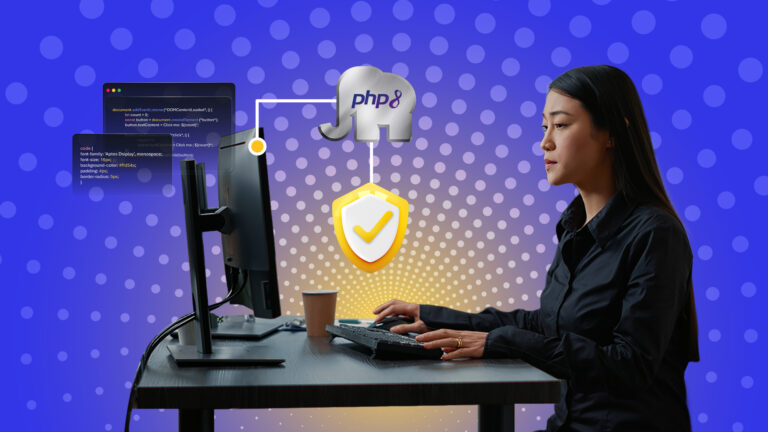The last Microsoft PowerApps monthly feature update from Microsoft shared some very exciting new developments for PowerApps!
In this article, we summarize the most exciting new features of PowerApps and what they mean for the end users and community.
Microsoft continues to improve and simplify PowerApps by updating Trust, Maker and End User Productivity. The company summarized the updates as follows:
Improving Trust
- Test Engine: An open platform for automated testing of canvas apps
- Support Azure AD Dynamic user membership group in Dataverse group teams
- Announcing General availability of Content Security Policy for PowerApps
- Announcing General availability of ESLint rules for PowerApps and Dynamics 365
- Modernized Business Units
Maker Productivity
- Announcing public preview of coauthoring in Modern app designer
- Maker matching now in public preview
- Engage your maker community with the new Power Platform communication site template
- Announcing general availability of PowerApps Ideas
- Modern command bar is on by default for existing apps in Canvas.
- Introducing the PDF function
- Making it easier to work with the right environment
End User Productivity
- Stay in-context with Teams link unfurling for canvas apps
- Read selected barcodes using your device’s camera
- Model-driven app form UI enhancements
- Mobile commanding improvements
So, what’s new in Microsoft PowerApps? Let’s find out!
Improving Trust
Test Engine: An open platform for automated testing of canvas apps
PowerApps testing tools have evolved into Test Engine. Using open source collaboration and Playwright’s browser testing platform, Test Engine builds upon the key use cases of Test Studio but takes them in a new, powerful direction. Test Engine provides customers with a robust testing platform for all types of PowerApps and integrates automated testing into the app development process with ease.
We have taken the first step toward those goals with what we have now. A local executable will be created when the project is built as an Open Source project on GitHub.
PowerApps canvas applications can be tested with this initial release. This project will continue to evolve over the next several months, adding support for model-driven apps and enhanced tooling to facilitate integration with CI/CD systems like GitHub and Azure DevOps. Please use this tool and give us feedback as we continue to build out the platform.
Dataverse group teams can use Azure AD dynamic user membership groups
With Microsoft Dataverse, you can differentiate owners, members, and guests of Azure Active Directory (Azure AD). Azure AD group support has been extended to include dynamic user membership group types, completing the full Azure AD group functionality. Dynamic user membership is managed by business rules. The members of groups are dynamically added/removed based on business rules, for example, where Department = “Sales” for all users from the Sales department. This Azure AD group type has been supported by Power Platform Dataverse authentication and authorization.
Content Security Policy for PowerApps
Content Security Policy was released in September this year as a public preview. In an environment with Content Security Policy enabled, you can detect and report policy violations to your custom reporting endpoint and protect apps against clickjacking attacks. Model-driven and Canvas apps can both be controlled separately via Content Security Policy.
Now that Content Security Policy for PowerApps is generally available, we’re excited about its general availability. It is recommended that you turn on the Content Security Policy in production environments after testing your apps in a sandbox environment with this setting enabled.
ESLint rules for PowerApps and Dynamics 365
The public preview of ESLint rules for PowerApps and Dynamics 365 was announced in July. As a result, you were able to find and fix issues in your JavaScript and TypeScript code directly within VSCode before packing them into the solution file. The ESLint rules for PowerApps and Dynamics 365 have been extended to include a few more rules and have been made even easier to integrate into your development environment. To improve the quality of your customizations and avoid packaging unsafe changes to the solution, we strongly recommend you include the ESLint for PowerApps npm package in your development environment.
Modernized Business Units
Users or teams can be assigned security roles from different business units using the business unit security model. The Matrix data access structure allows users/teams to access data from different business units based on their security roles rather than the traditional hierarchical data access structure.
Users can update the Owning Business unit column to set the record’s ownership, and other users with security roles assigned to this Owning Business unit can access the record. Records can also be transferred to another user without the new owner having a security role from the record’s Owning Business unit. As a result, the operation overhead for managing and assigning security roles from different business units is reduced, allowing for greater collaboration while maintaining high levels of security compliance.
Maker Productivity
Coauthoring in Modern App Designer
Coauthoring is now available in most regions, allowing Fusion teams to build better apps faster. Coauthoring allows you to see who is working on the same app at the same time and to see their changes in real-time. Because coauthoring helps you avoid unintentionally overwriting each other’s changes, you don’t have to worry about your changes. It is always the latest version of the app that you work on as a team.
By combining this feature with Office-like comments, people will be able to work together efficiently and effectively.
Maker matching
During app development, connect with experienced makers in your organization! In addition to surfacing your organization’s internal community channels and resources, the virtual agent will also assist you with staying connected.
New Power Platform Communication Site Template
The Power Platform communication site template was launched this month. With the Power Platform communication site template, you can create your internal Power Platform wiki and hub site using a starting point of content and page templates. Here you will find news and resources for Power Platform makers and users within your organization, including digital governance and compliance guardrails, upcoming events, success stories, and more.
PowerApps Ideas
As of today, PowerApps Ideas are available to the general public. Power FX formulas can now be written using natural language or examples.
Power FX is a low-code programming language that lets people with Excel-like skills add advanced logic to their apps. It may take some time to find, learn about, and debug complex formulas, even for the most experienced Power FX users.
By leveraging AI, PowerApps Ideas makes it easier for everyone to write formulas. Compared to the preview version, more controls and properties are supported. The new UI changes prompt ideas contextually and displays ideas in a larger panel.
New PDF function
To accommodate scenarios where app users needed to print physical copies of a screen’s contents, the Print function was introduced in 2021. The PDF function takes that concept to the next level this month.
App users can send screen content in many scenarios with this experimental release. PDFs can be configured to include the entire screen’s contents or a specific part and can expand to include tabular data beyond the visible area of the screen, extending across multiple pages. With Power Automate, you can now generate a PDF of screen contents to send via email or store in a Power Automate flow.
Enhanced Environment
With the enhanced environment picking experience, it is easier to find the right environment for your work. Makers can now distinguish environments with Dataverse from those without, and environments where they have sufficient maker and data permission from those without. By doing so, makers can choose the right environments for building modern apps.
End User Productivity
Stay up to date with Teams links for Canvas apps
The link unfurling feature for canvas apps is now live in Teams. Before, when users copied an app URL and pasted it into a Teams message, they would only receive the app’s full URL or a shortened vanity URL. A click on the app’s link would open the app in a browser, forcing the user to leave Teams to use the app. With canvas apps, recipients can now directly add PowerApps to Teams or open the app in a browser from an adaptive card.
Adding an app to Teams from the unfurled card is like adding an app to a tab or from the Teams Store. Users can add the PowerApps app to a chat, channel, or as a personal app from this flow. With link unfurling, users can start using great apps right away in Teams, thereby saving time and increasing productivity.
Use your device’s camera to read selected barcodes
With the new experimental Barcode Reader control, you can scan QR, data-matrix, CODABAR, and more barcodes on Android and iOS devices. Rather than automatically reading the first barcode detected, this new control supports more types of barcodes and enables users to select which barcode in view to read.
Using Power FX, you can empower your workers to read barcodes and automatically act on the returned values. With the barcode reader control, you can manage inventory, register attendees, verify shipments, and much more much faster.
Enhancements to the UI of model-driven apps
Improved data presentation is the goal of form UX enhancements. There are several small changes included in this set. In order to make navigation easier, light gray form backgrounds and shadows are added to form sections. By reducing white space and removing field dividers, forms now use consistent fonts and have greater data density. Additionally, quick view form labels instead of icons are displayed on top.
Mobile Command Improvements
PowerApps mobile commanding improvements provide easy access to contextual commands via opt-in settings. The delete and process commands are only displayed when they are relevant. Several global injected commands have been moved to overflow menus, including Edit columns, Edit filters, and Show Chart. Similarly, to the web app, PowerApps mobile apps now have a top-mounted command bar. By using the larger tablet viewport, the user has access to more commands.
All these updates make an already incredible PowerApps experience even better. The development team behind Microsoft PowerApps is constantly at work, to improve the experience for trust, maker productivity, and end-user productivity every single month.
Do You Need Microsoft PowerApps Training for PowerApps?
ClinkIT Solutions is a 6x Gold Microsoft Partner and is more than equipped to help your organization get the most out of PowerApps. Talk to us today to see how our PowerApps development solutions can help you solve some of your biggest business challenges.



